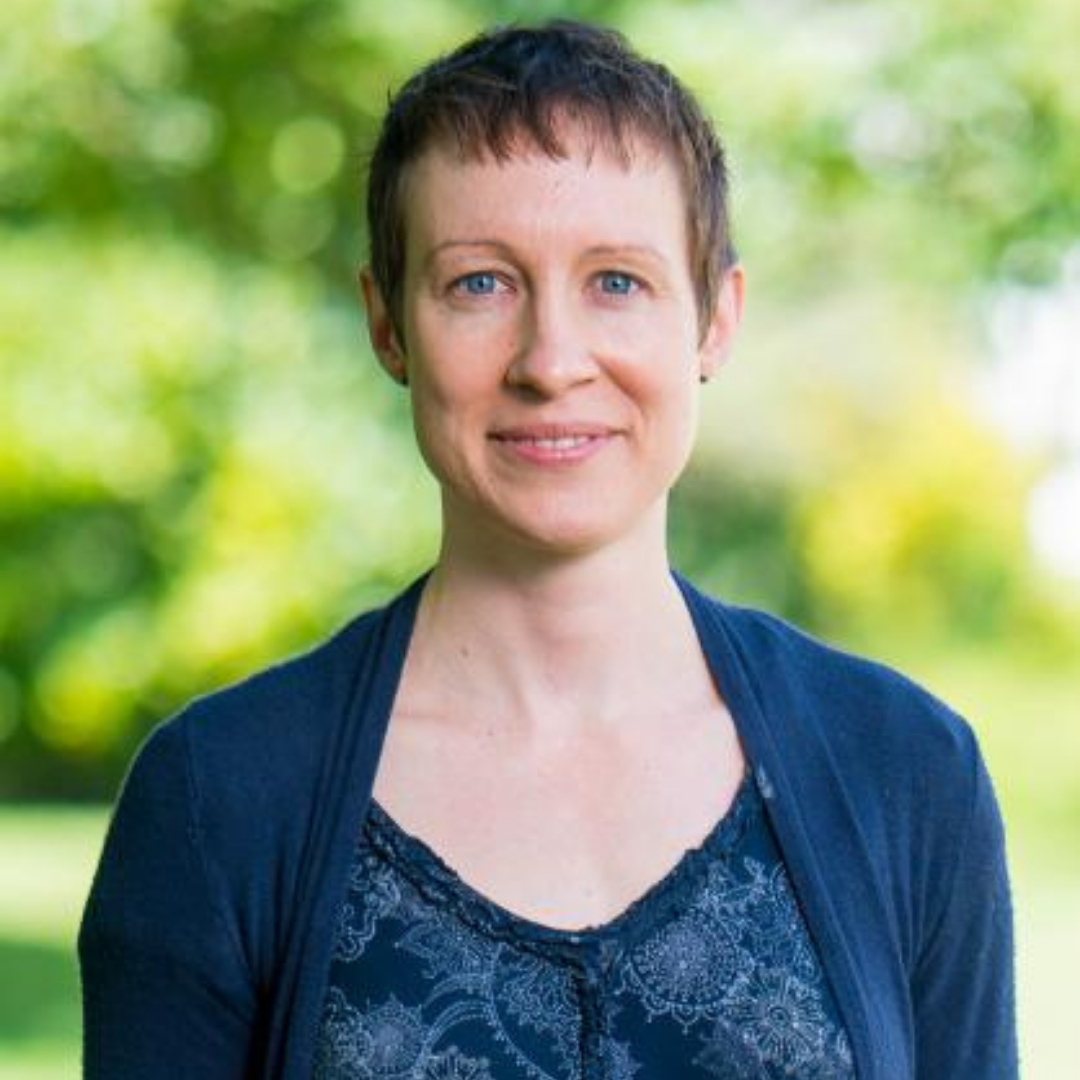
Is It Gerrymandering? Professor Ellen Veomett Does the Math
Professor Ellen Veomett’s work couldn’t get more timely or more politically charged—especially for mathematics. In her research, Veomett studies and designs metrics to determine whether districts have been gerrymandered, and her upcoming January Term students will get to do the math, too.
Gerrymandering, just as a refresher and according to Britannica, refers to “the practice of drawing the boundaries of electoral districts in a way that gives one political party an unfair advantage over its rivals (political or partisan gerrymandering) or that dilutes the voting power of members of ethnic or linguistic minority groups (racial gerrymandering).” Gerrymandering has been front-page news now for several years.
“Every state is in the process of redrawing their congressional districts and their state legislative districts,” said Veomett. “And some of them have been finalized and some of them are still in the process of being hammered out. My collaborators and I have defined a new metric that is intended to detect gerrymandering.”
“You can't ignore the fact that people separate themselves or they homogenize themselves differently in every state,” Veomett continued. “And so, exactly where the district is in the state and what districts it’s adjacent to, or not adjacent to, really matters.” The metrics Veomett and her team previously studied, called the efficiency gap and the declination, ignored these concerns. “My collaborators and I decided we agree that that’s a problem. You want to use all of the information that you have, both the map and the partisan lean of people in different regions of the state. We created a new metric that we call the Geography and Election Outcome metric to indicate that it uses both geography and election outcomes.” Using its acronym, they call this the GEO Metric.
Last time we checked in, Veomett, the chair of the Department of Mathematics and Computer Science, was awaiting the results of the 2020 census. “That process was prolonged, elongated because of the pandemic and because gathering census data was very difficult. Waiting for the 2020 census meant we’re waiting for new district maps to get created so we can analyze them.” Veomett and her team are ready with the new metric to assess whether districts have been gerrymandered, and to what effect.
Utilizing data from the Princeton Gerrymandering Project, Veomett hopes to show how the GEO Metric will be able to indicate gerrymandering problems accurately based on its simple computations. So far, the metric is working. “We've analyzed it on some old maps to make sure that it was doing what we thought it should do and working well, but this is the first time that we’ve had access to so many maps, and we’ve just been analyzing all of them. It’s really great to see that the metric seems to be indicating problems where there seem to be problems, and seems to be indicating no problems where there actually seems to be no problems.”
“And potentially, it’s a metric that the courts might like because it does not involve any computational decisions whatsoever. It doesn’t require you to have a super computer; it doesn’t require you to try to explain that particular sampling algorithm that you’re using. It’s deterministic.”
Veomett is awaiting publication of her team’s findings in Election Law Journal, and then hopes the GEO Metric will be widely put into use. “We hope it will be used in courts to show that some kind of bias is happening,” she said.
In 2019, the Supreme Court said that partisan gerrymandering is not a case or controversy, and therefore it isn’t something federal courts could rule on.
“It has to be state courts [that decide] because the federal court has said it will not get into [cases of potential gerrymandering]. It all depends on what the laws are in that state. Every state has different kinds of statements in its state constitution, different kinds of requirements for their districting maps. It’s a state-by-state thing on whether gerrymandering is even a problem or not. And whether it’s racial gerrymandering that’s a problem or whether they also consider partisan gerrymandering to be a problem.”
Students in Veomett’s course, Math In Our Democracy: Detecting and Preventing Gerrymandering, which she’s teaching for the third Jan Term in a row, will discuss and work with the new GEO Metric, along with many other metrics and techniques to address partisan and racial gerrymandering. Students will have the opportunity to do some calculating, examine their analyses, and ask questions of the newly drawn districts: What’s happening there? What does this particular output mean?
“I want to make sure students can listen to what the media and what politicians are saying about new districting maps, and have the mathematical and analytical tools needed to know whether those statements are valid or bogus,” Veomett said.
Read Saint Mary’s Magazine’s article on Veomett’s earlier gerrymandering research here.